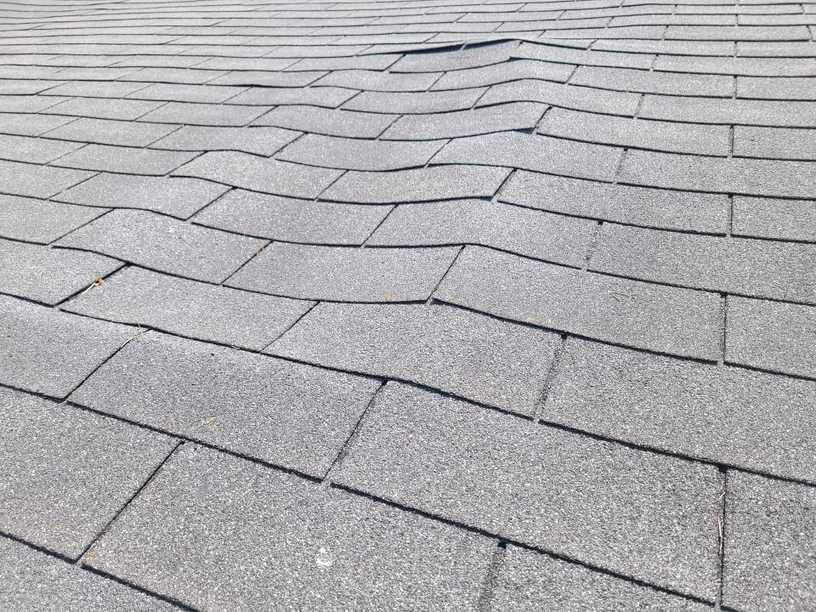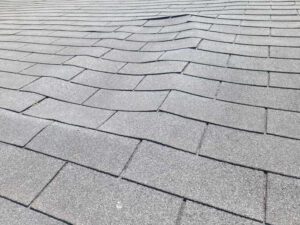High Point Roofing encompasses many components that work together to protect your home from the elements. From the basics to the more advanced features, here’s what you need to know about Roofing.
Gutters and downspouts are installed along the roofline to collect rainwater. Ventilation features like ridge vents and soffit vents help regulate temperature and moisture levels in the attic, preventing mold and damage to the shingles and roof deck.

Shingles are the aesthetic showpiece of a roof and provide great curb appeal. They are not just used to protect your home from water and wind, though – shingles can actually save you money on your energy bills. There are different types of shingles, each with its own unique structure and manufacturing process.
The history of shingles dates back to 1840, when coal tar was first used to saturate layers of felt to create a rolled sheet that was then covered with bits of shell or sand. Over the years, improvements were made to the shingle design. The granules on the top of the shingle help it shed water, and the asphalt coating acts as a sealant to keep moisture out.
In addition to these aforementioned benefits, modern shingles are treated against mold and mildew. They also come in different textures, thicknesses and colors, allowing you to customize the look of your roof.
While shingles are the visual element of your roof, they work in tandem with other roofing materials to keep your home safe and secure. Underneath shingles are the trusses and joists that support your roof, followed by the roof decking, which is what keeps rain and snow out. Underneath the decking is the underlayment, which stops shingles from becoming waterlogged and rotting.
Shingles can still be damaged by the elements, though. Over time, the sun’s UV rays can cause them to crack and peel, especially along eaves or in complex rooflines. They may also be prone to wear and tear from the heavy weight of snow, or from wind that blows debris across the roof. In extreme cases, shingle damage can lead to leaks into your home.
Tiles
Tiles are flat, thin materials that come in different shapes, sizes and colors. They are used for flooring, walls, and roofs in a variety of styles. It’s important to know how to choose the right tiles for your project and to find a company that specializes in installing them correctly. A single mistake could lead to costly repairs in the future.
A roof is a complex system, and the tiles need to be carefully designed for durability and performance. Roof tiles are designed to overlap, creating a durable barrier that keeps water and debris out while reducing heat and moisture. These tiles also allow air to flow beneath the tiles, keeping the structure well-insulated and protecting it over time.
There are many different types of tile, ranging from ceramic and porcelain to natural stone and metal. Each tile is rated for hardness and strength. It’s also possible to get custom-made tiles for curved roof sections. Choosing the right tile is important, as it affects the overall appearance of your home.
The most common type of tile is clay, but it can be made from a number of other materials as well. Clay tiles are available in a variety of shapes, styles and textures. They can also be glazed or painted.
The tiles are formed by semi-dry pressing and then subjected to one or more firings. The back of the tile is porous, and it’s usually white or gray, while the front is enameled in a wide range of colors. The porosity of a tile depends on its enamel and firing conditions, and it can range from 12% to 20%. A tile with high porosity may have a low breaking load, while one with a lower porosity will have a higher breaking load.
Metal
Metal roofing has been a staple of industrial settings for years but it’s becoming increasingly common in residential homes due to its durability, strength, and aesthetic. It is often a more expensive material than shingles, but it will last for decades and typically pays for itself in lower maintenance costs over time.
Like most other roof types, metal comes in a wide variety of colors and styles, allowing architects to create unique and aesthetically pleasing designs for buildings and homes. It also has the advantage of being fire resistant, making it a good choice for high-rise buildings or structures in areas with frequent wildfires.
All metal starts out as coil, which is rolled out and treated before being slit or cut to size for the various panel profiles and sizes needed for the project. Once the panels are formed they can be connected or seamed together to form a complete metal roof.
A popular option is standing seam metal roofing, which consists of panels that are interlocked together to form a seam that stands vertically. Standing seam is more expensive than other styles but it offers superior durability and a beautiful raw metal finish. It can be installed with concealed fastener clips or the more commonly used exposed fastener method.
Another great option for homeowners is corrugated metal. It’s available in several styles and finishes and has the ability to mimic the look of shingle or tile roofing.
Galvanized and galvalume are the two main types of steel used for roofing. Galvanized steel is coated with zinc to protect against rust while galvalume is made of aluminum and steel that’s been combined to resist corrosion.
Flat
Flat roofs can be made of a variety of materials. However, roofing experts discourage the use of shingles on flat roofs because they provide many points of sealing and can lead to leakage. Instead, they recommend membranes that are long-lasting and hold up well to foot traffic and weather.
Modern flat roofs can be constructed from large factory-made sheets of EPDM synthetic rubber, polyvinyl chloride (PVC), or thermoplastic polyolefin (TPO). These are often bonded together in the field during installation using hot or cold seaming methods. The quality of the seaming process is an important factor in the long-term durability of a flat roof because leaks occur more frequently at joints between different parts of the roofing system than on the surface of the membrane.
Another option for flat roofing is a built-up roof (BUR). This includes layers of tar paper or a combination of felts and asphalt impregnated with bitumen. These are protected by a layer of gravel and terminated in sheet metal flashings called ‘gravel stops’ that prevent the underlying materials from washing off during heavy rains. The quality of a tar roof depends on the quality of the bitumen, the material used to make the tar paper and the grade of the roofing felts.
Other options for flat roofing include a metal roof, usually tin (which can be welded or folded and soldered) or lead (which can be welded, folded or soldered). Lead is an expensive option, however, and it is vulnerable to being stolen and resold as scrap metal. All of these roof types require regular maintenance to prolong their life and prevent leaks. Keeping drains clear of obstructions is essential, as well as inspecting and maintaining the integrity of flashing around chimneys, skylights, and other structures that penetrate the roof’s surface.
Agable
Gable roofs are a popular choice for home designs, due to their simple construction and distinctive triangular shape. The term “gable” may come from the Greek word for a triangular wall, but it is also used to describe the section of a building’s structure that extends upward from the roof’s ridge. These roofs are commonly seen in Colonial-style and neoclassical homes, as well as many other types of architecture.
There are several different kinds of gable roofs, each with their own distinct characteristics. The standard gable is made of two slopes that meet at one ridge, creating an “A” shape at each end of the roof. This type of roof is often accompanied by dormers, which are structures that rise vertically from the roof slopes to add extra living space and architectural flair to the home.
The cross gable is another common variation of the gable style, which features two gable sections that are placed perpendicular to each other. These roofs are often used on larger buildings, as they provide plenty of space for additional rooms or attic areas.
Gable roofs are particularly useful in cold climates, as they allow snow and rain to easily fall off the roof. This is a significant advantage over other roof styles, which can cause water or snow to build up and damage the home’s structure.
While many people think of gable roofs as being more suitable for residential structures, they are actually a great option for many types of commercial buildings. They are especially popular in retail stores and commercial offices, as they create a strong and inviting façade that draws the attention of passersby. In addition, these roofs are easy to construct and require fewer materials than other roofing systems.


